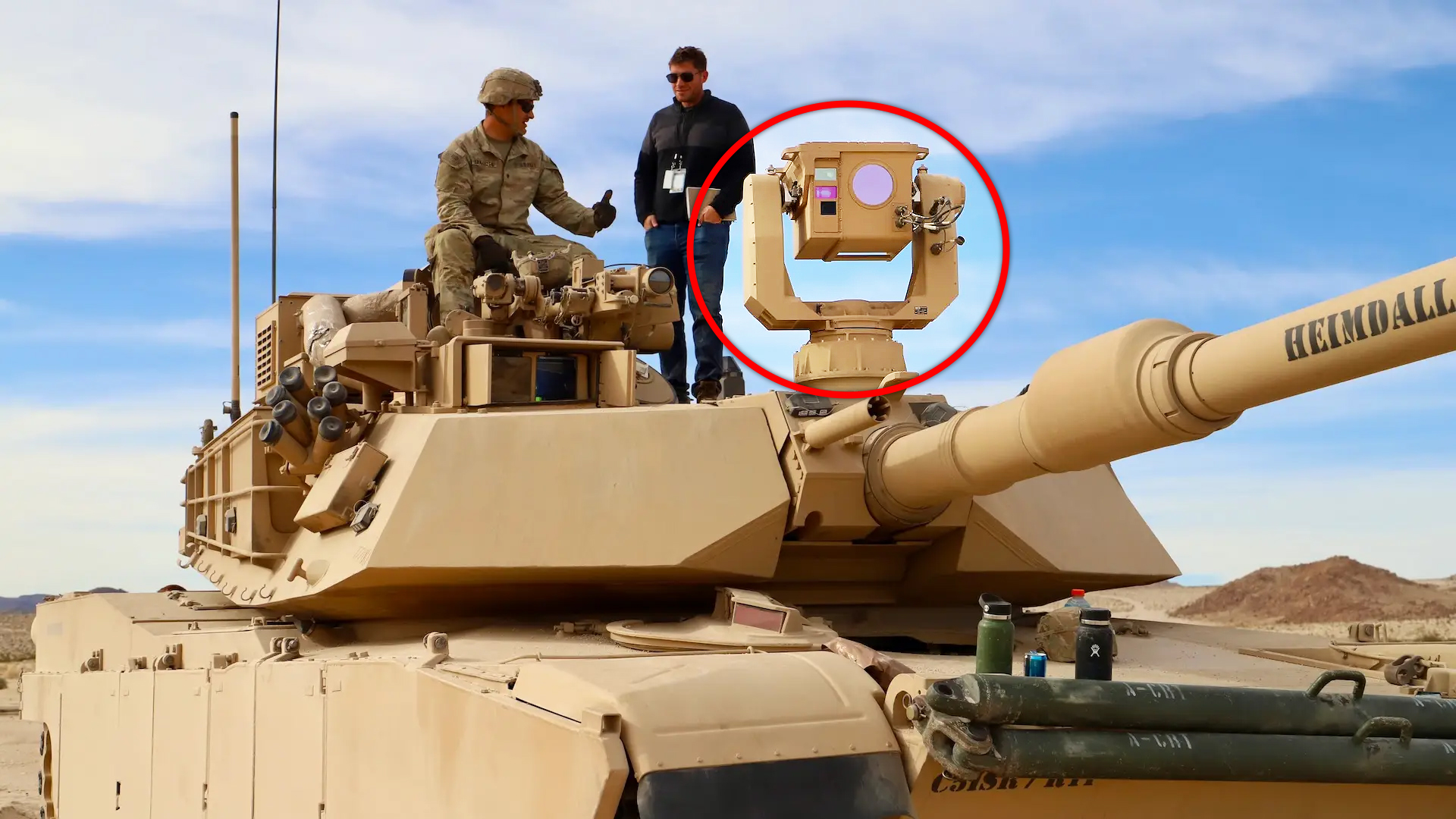New images have emerged of a U.S. Army M1 Abrams tank sporting an experimental artificial intelligence (AI)-driven target recognition system designed to speed up how fast threats can be spotted and engaged.
The images were released on the U.S. military’s Defense Visual Information Distribution Service (DVIDS) website on February 13, 2023. However, they were in fact taken on November 5, 2022, as part of the five-week Project Convergence 2022 event, or PC22, which took place in California.
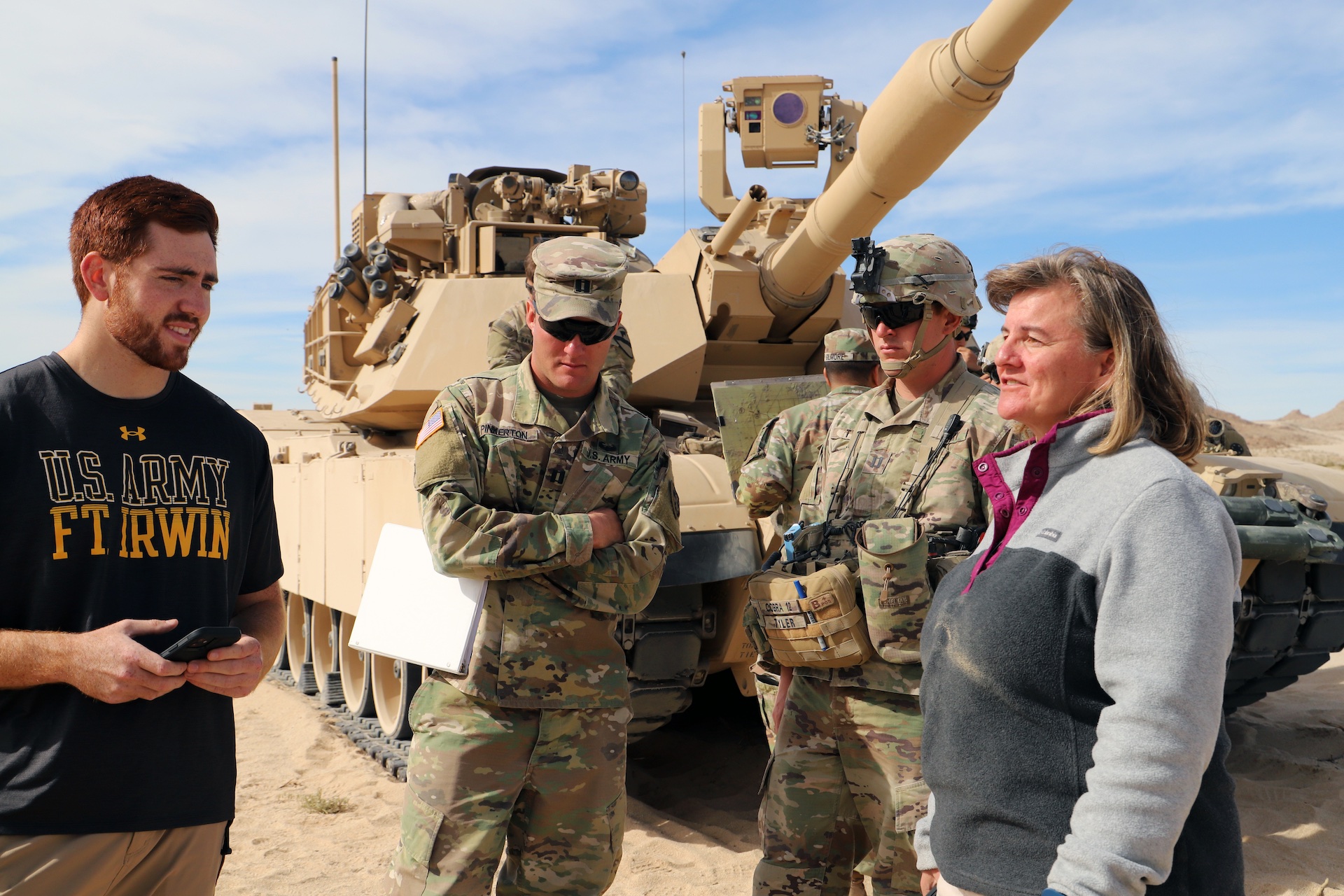
As the official image captions note, Army soldiers teamed up with engineers and scientists from the Command, Control, Communications, Computers, Cyber, Intelligence, Surveillance, and Reconnaissance (C5ISR) Center to test prototypes of the technology being developed under the Advanced Targeting and Lethality Aided System (ATLAS) program. “A wide range of aided target acquisition, tracking, and reporting capabilities [were tested] … in a realistic combat environment” during PC22, according to the captions.
We’re able to see components of ATLAS being tested in the images. Most notably, we see the boxy sensor unit mounted to a rotating base on the M1’s turret just behind its 120mm main gun.
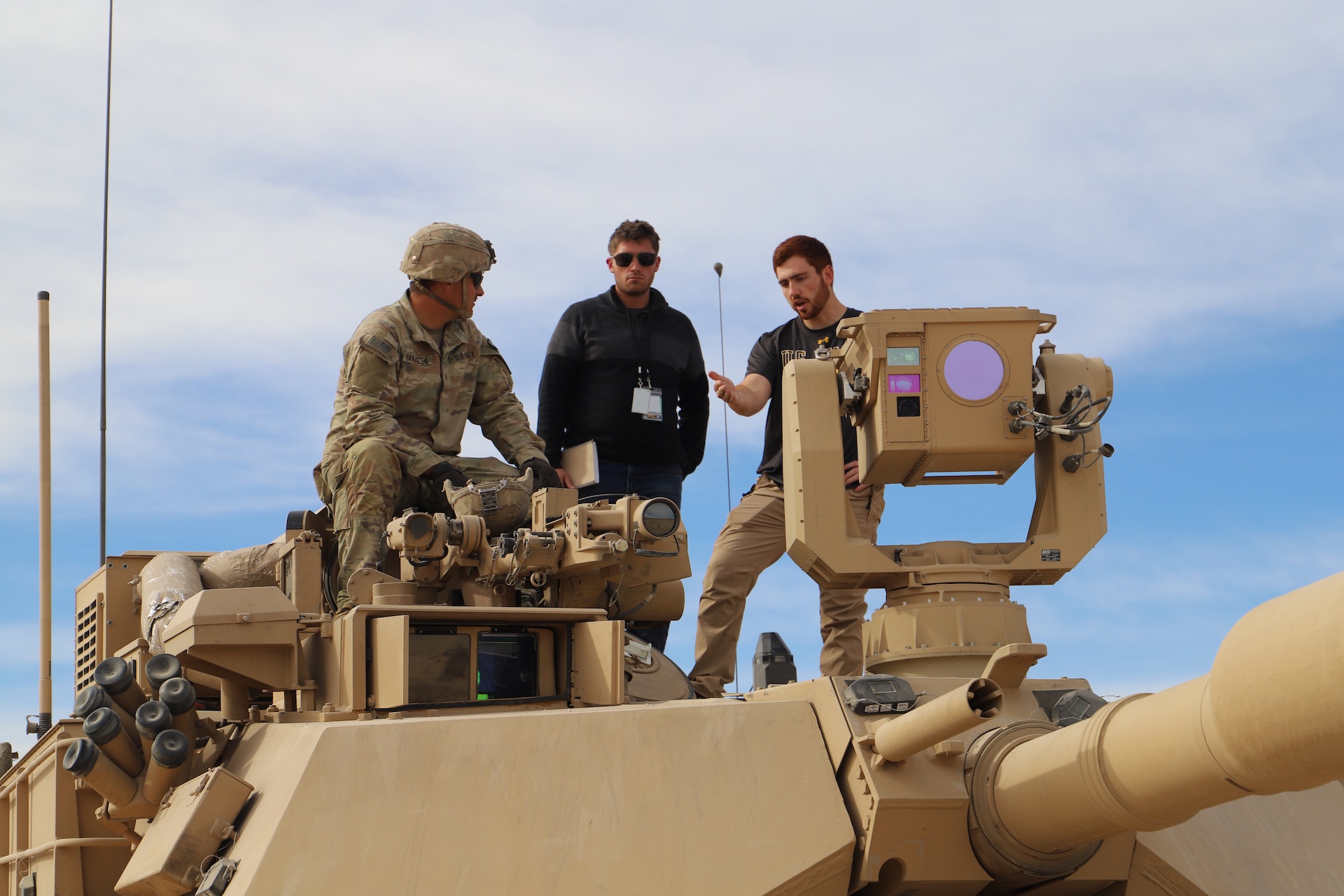
A black box can be seen beneath the main sensor circled in red below, and similar boxes are located elsewhere around the tank. These would seem to be rigged up as part of the Instrumentable-Multiple Integrated Laser Engagement System Combat Vehicle Tactical Engagement Simulation System (I-MILES CVTESS) for the exercise, and are therefore not connected to the ATLAS system. I-MILES is used for detecting and scoring hits using lasers to simulate combat and assess battle damage.
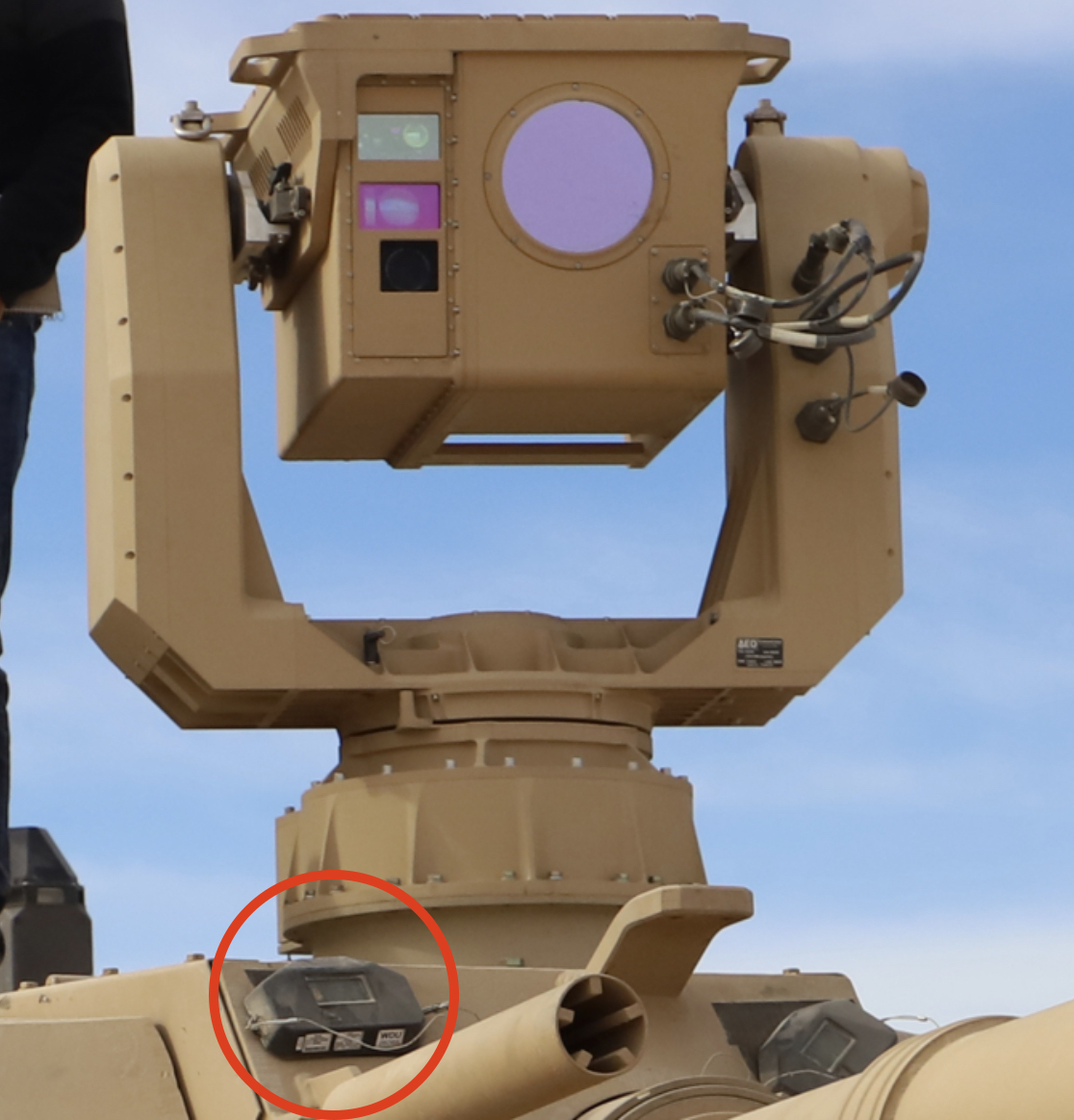
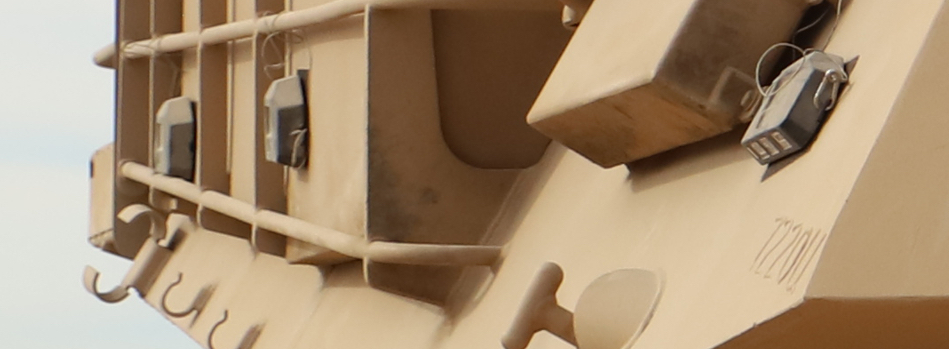
The front of the Abrams also sports another sensor of sorts. The exact nature and purpose of this sensor remains unclear, although it does not appear to be standard on other M1s we’ve seen.
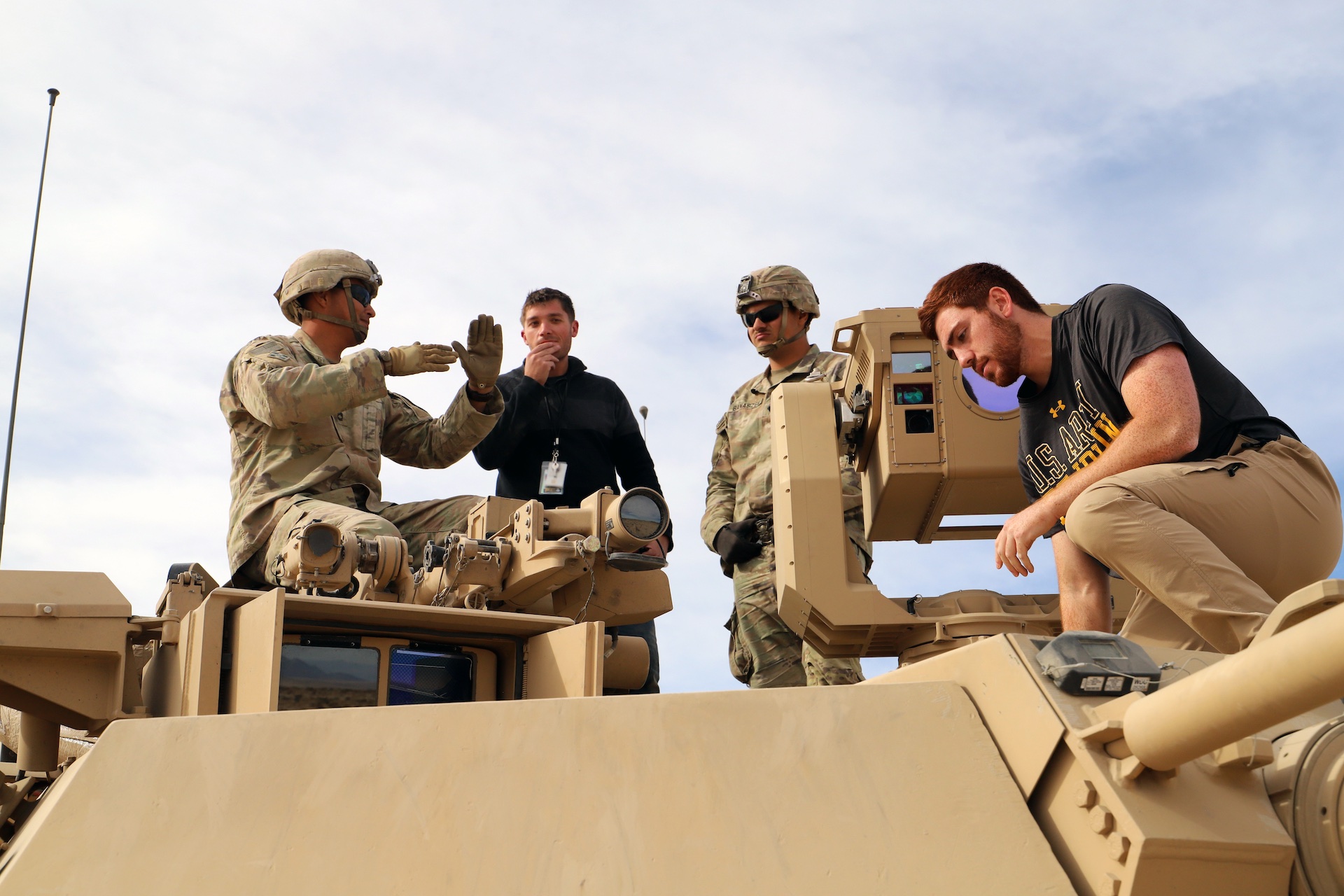
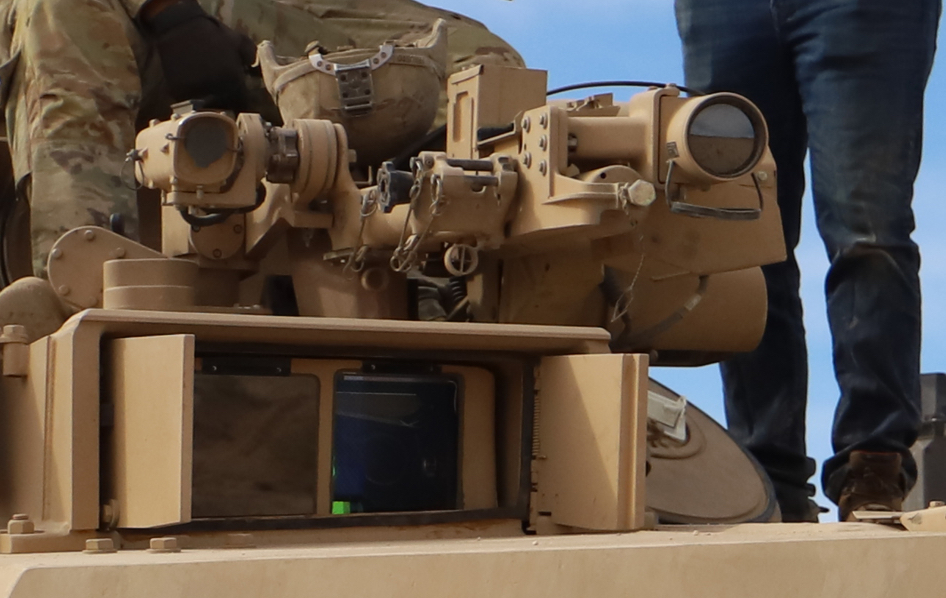
To the rear of the Abrams, we see the main sensor unit from behind as well as other pieces of equipment.
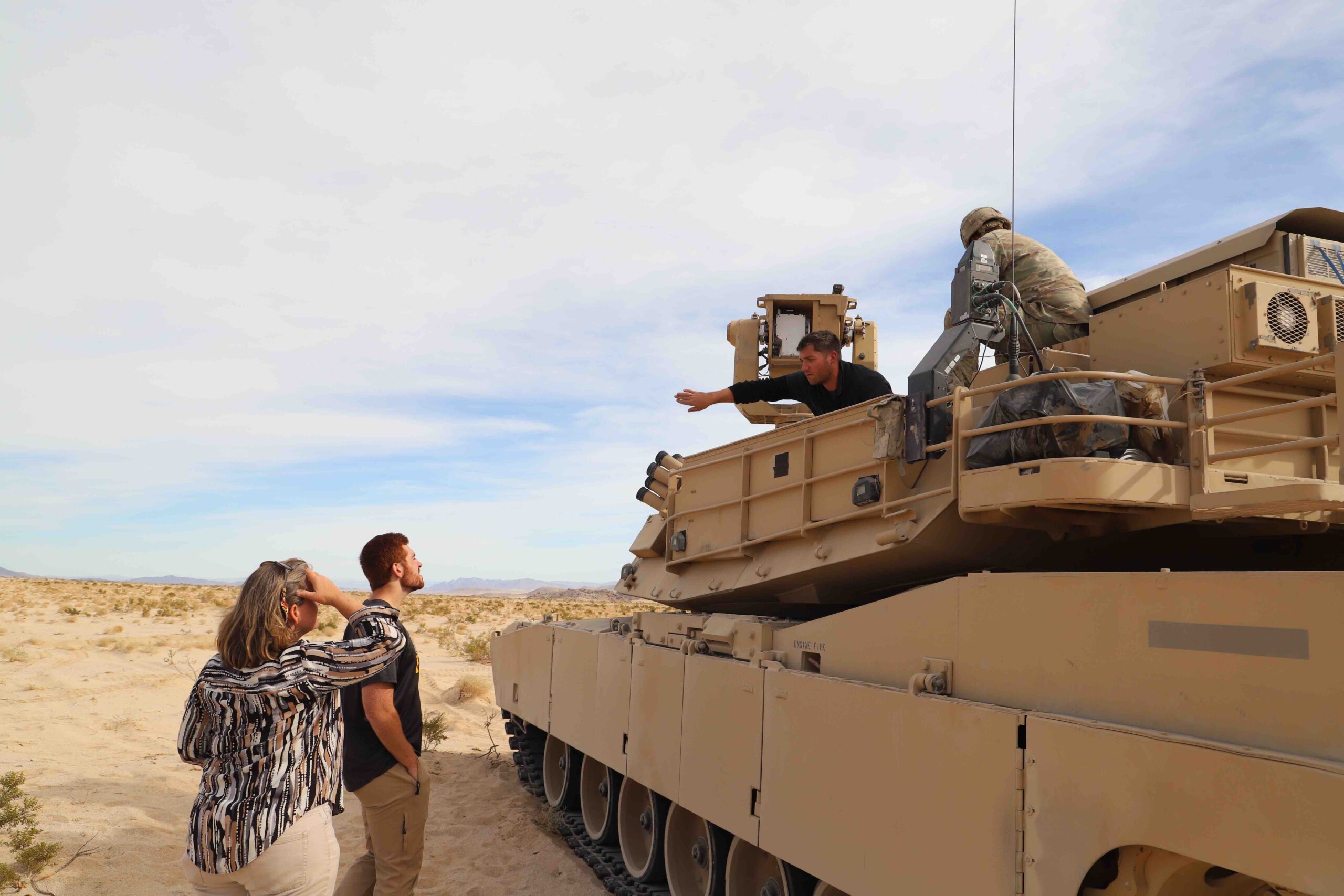
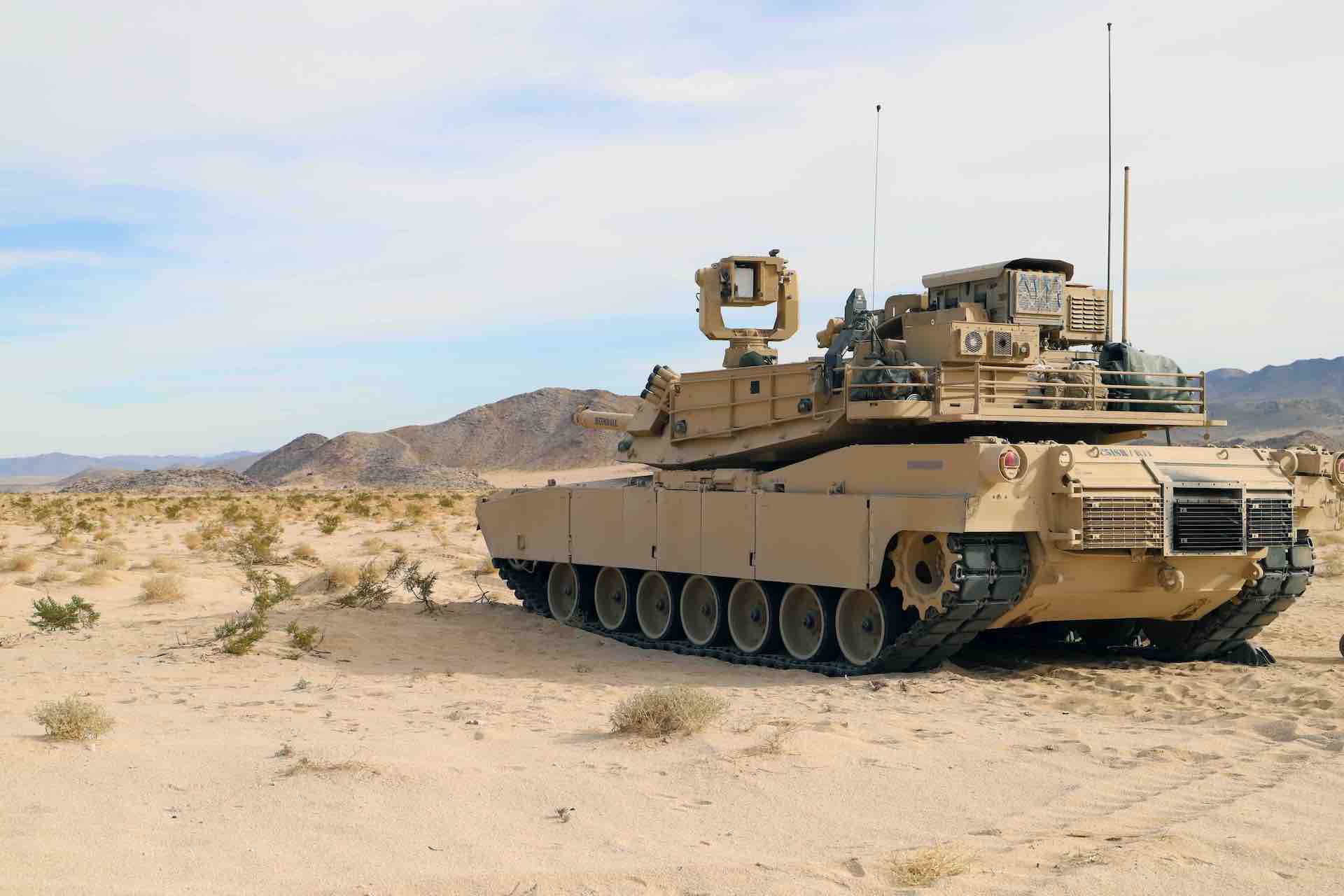
In particular, a large black box to the left can be seen circled in red below, which is part of the I-MILES laser system. We also see what appears to be the back of an air conditioning unit, likely for the various computers needed to operate and drive ATLAS, also circled in red.
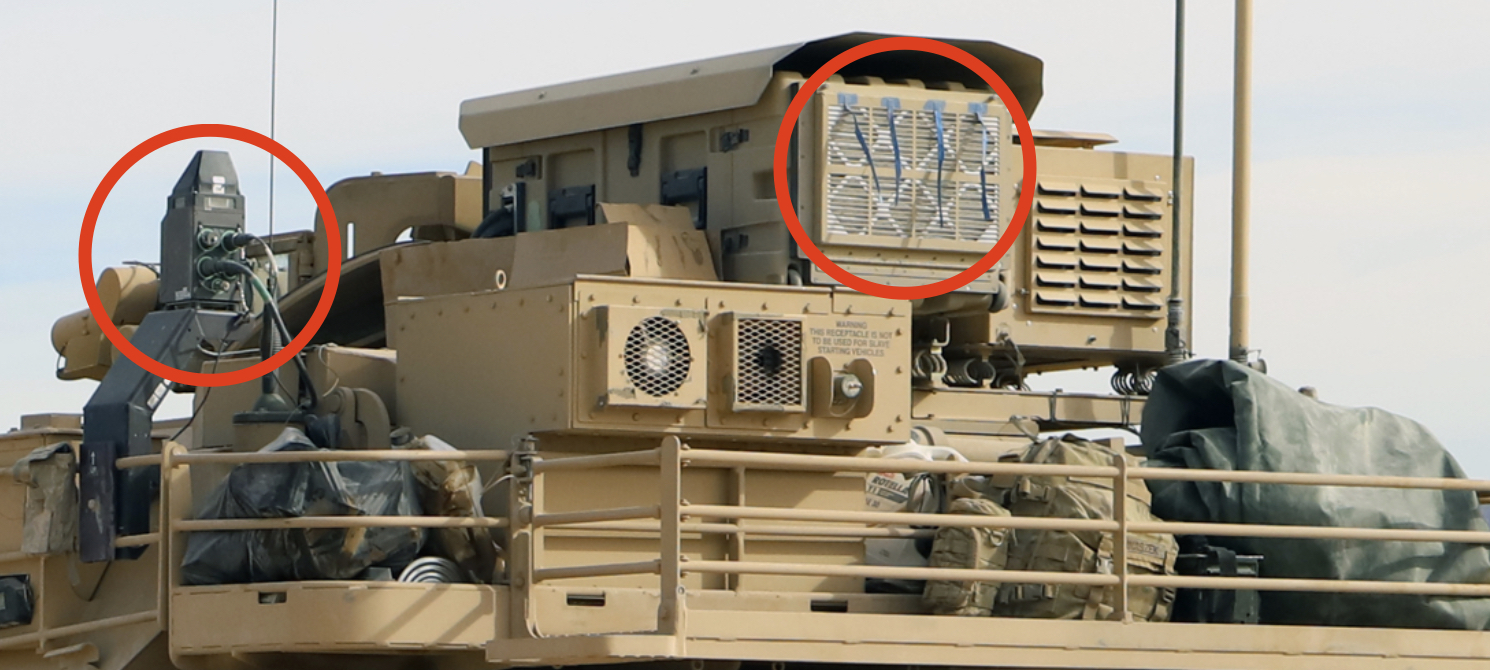
A joint initiative involving the U.S. Army Combat Capabilities Development Command’s (DEVCOM) C5ISR and Armaments Centers, ATLAS “uses cutting-edge sensing technologies and machine-learning algorithms to automate manual tasks during passive target acquisition, allowing crews to engage three targets in the time it would normally take for them to engage one,” according to DVIDS.
As Nathan Strout at C4ISRNET highlights, ATLAS begins with the optical sensor attached to the tank feeding images of the surrounding area into AI algorithms for object detection and image classification. From there, images of the detected threats are displayed on the tank’s touchscreen interface for tank commanders to see, along with the weapons/ammunition selection options.
The program essentially aims to speed up target recognition through experimentation with, and the implementation of, AI, eliminating the need for tank crews to rely on the manual location of targets alone.

This all requires a human-in-the-loop, it should be noted, as tank commanders still have to select which targets to engage and with which weapon and ammunition types. As Dr. John Graybeal, lead engineering psychologist for C5ISR’s Human Perception Laboratory noted in an Army article back in 2021, ATLAS is designed to support manual target recognition and thus increase the chances of engaging enemy targets. “ATLAS uses an aided target recognition system that scans a field of regard, so the Soldier is assisted by an artificial intelligence system that is also searching the scene.”
The Army’s efforts to enhance tank lethality by implementing machine learning and AI technologies have been in the works for several years now. Back in July 2020, the service announced that engineers at Picatinny Arsenal, New Jersey, were developing the Advanced Lethality and Accuracy System for Medium Caliber (ALAS-MC), an armaments system integrating “a medium caliber weapon, ammunition, fire control, and sensors to effectively engage targets at extended ranges.” The ALAS-MC armaments system integrated a sensor unit with a 50mm auto cannon, known as the XM913, seen below.
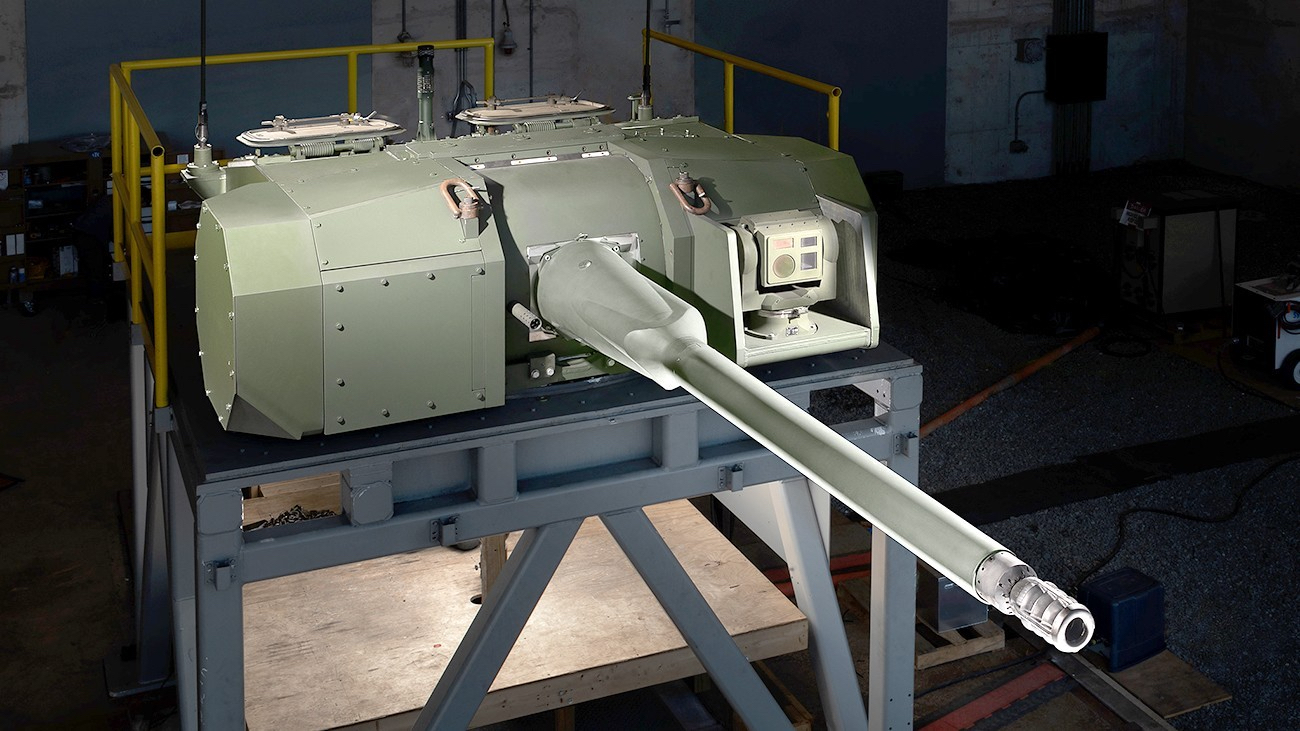
Then, in October 2020, the ATLAS system was demonstrated by the Army on a General Dynamics Land Systems Griffin I testbed vehicle. Here, the ALAS-MC auto-loading 50mm cannon was paired with a infrared Aided Target Recognition (AiTR) sensor ball, with images processed through AI algorithms and sent to a user interface.
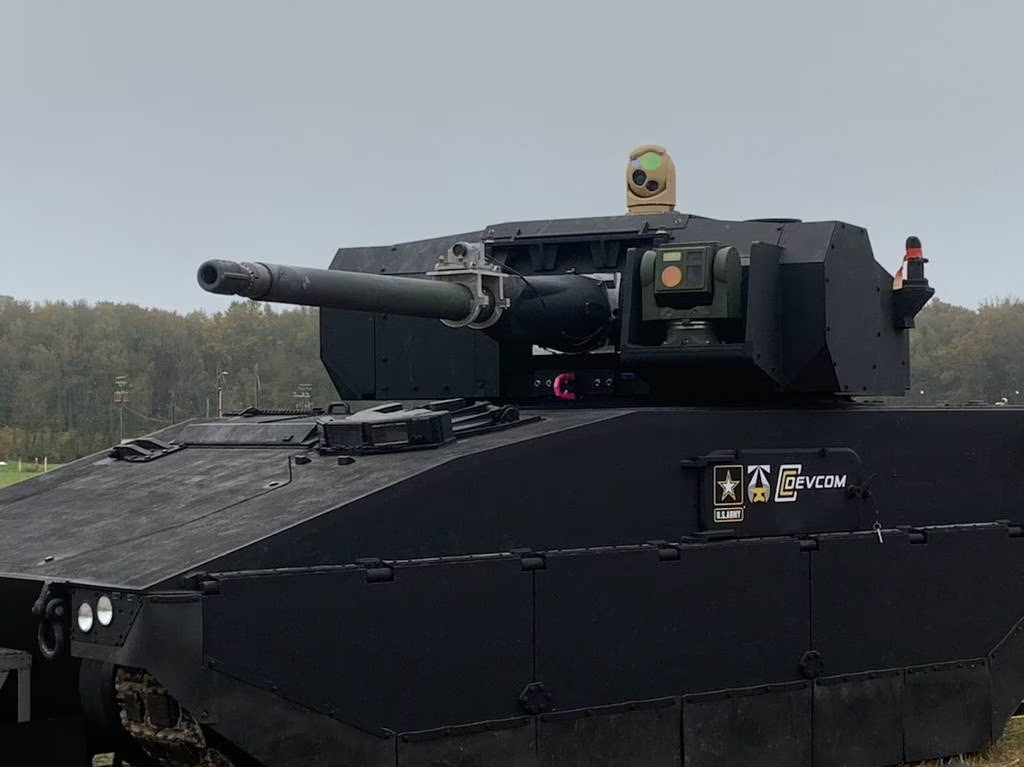
Of course, getting ATLAS working could yield huge potential benefits for the Army. AI- and computer-assisted target selection would not only allow tank crews to eliminate threats more quickly – it could also be used to detect threats that humans cannot. This could also be expanded upon to potentially help tank crews prioritize which threats to neutralize first in specific scenarios. Recently, we’ve seen panoramic infrared search and track-type systems (IRST) used on ships with similar capabilities to ATLAS. Similar systems could be used to provide persistent, 360-degree coverage for emerging threats for land vehicles.
AI could also help with land vehicle-based distributed aperture systems (DAS), a likely feature on the AbramsX future main battle tank, allowing crews to ‘look through’ the tank’s hull using augmented reality goggles. Both ATLAS, 360 IRST, and DAS-like systems could highlight objects of interest or threats digitally in their surroundings with the right software. In fact, it’s possible a common AI-driven software architecture could deployed across different electro-optical and infrared situational awareness systems for ground vehicles.
In addition, modern battle tanks, especially the highly advanced M1 Abrams, require in-depth and lengthy training periods for crews to learn how to operate them. Using ATLAS for improved target selection and target engagement would allow tank units to better balance the demands needed to successfully operate tanks in combat. As we highlighted in this past War Zone feature, tank operators have to negotiate a range of challenges during tank-on-tank combat, including tactics, vehicle operation, and weapons operation.
And while ATLAS is centered on human-in-the-loop contexts, the new technology could also be a stepping stone for targeting capabilities desirable on larger uncrewed ground vehicles. This all comes amid a broader push towards AI and autonomous weapons systems from the DoD, and constitutes just one example of how AI is an increasingly important component of future weapons development.
Contact the author: oliver@thewarzone.com, joe@thedrive.com
